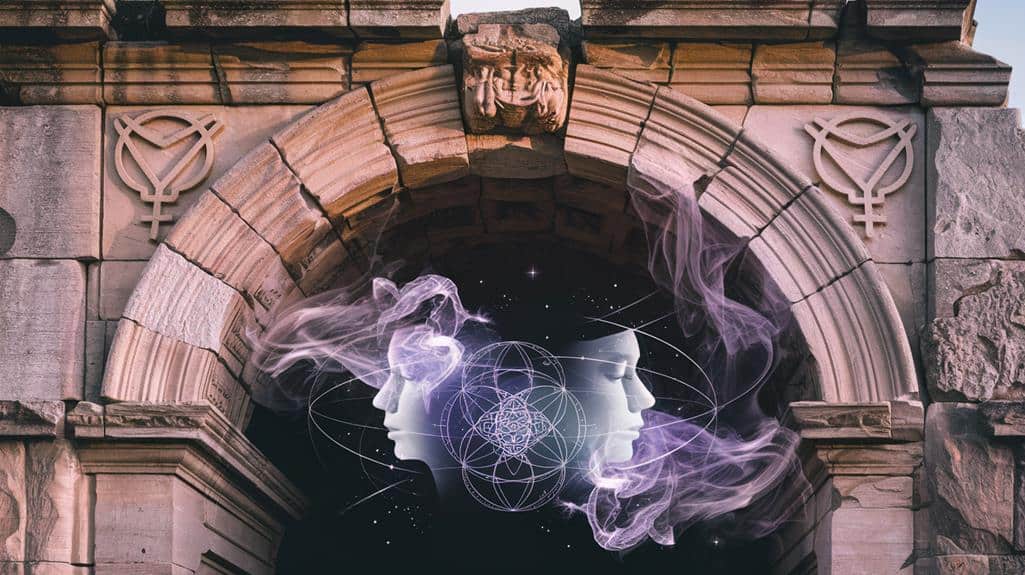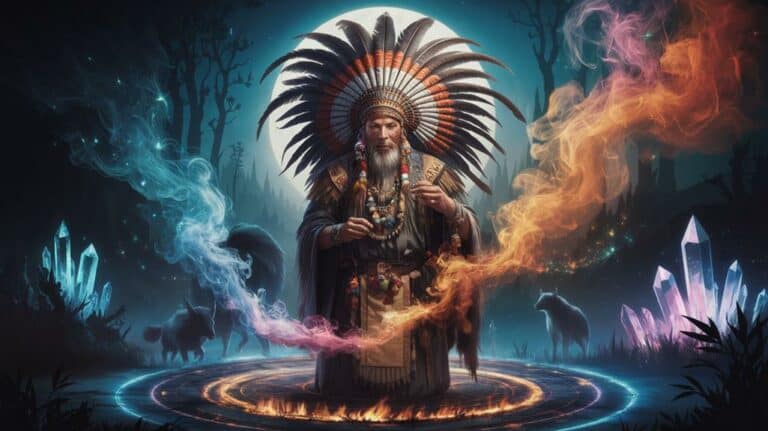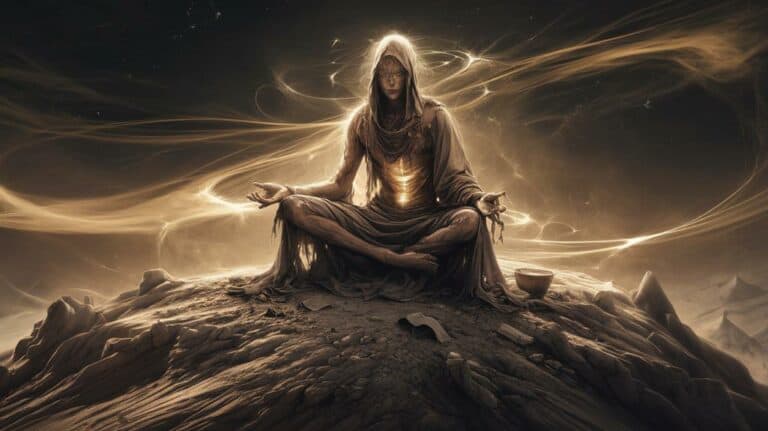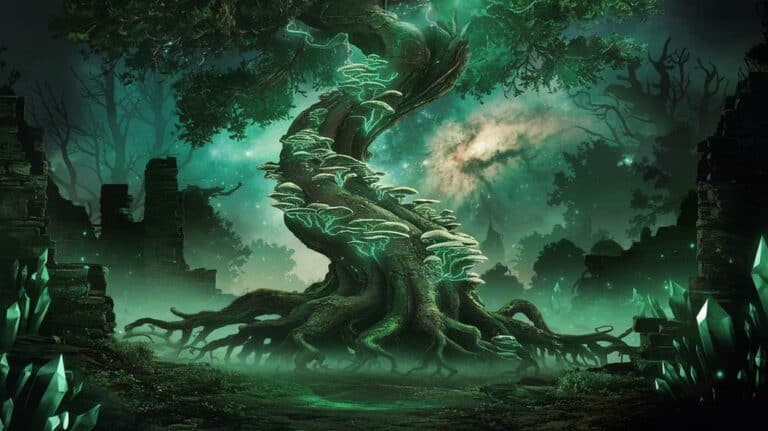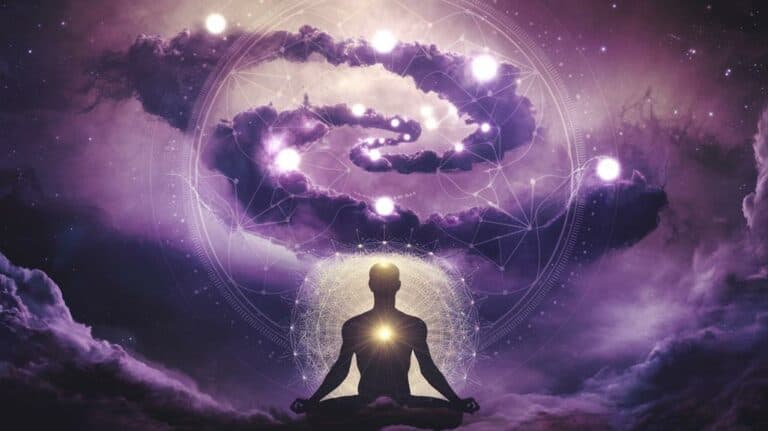Gender and Mysticism: Historical and Contemporary Perspectives
You’ll notice that throughout history, mystical experiences have often transcended traditional gender roles, creating spaces where women could claim spiritual authority despite societal restrictions. From medieval Christian mystics who received divine visions to contemporary practitioners who honor the sacred feminine, the intersection of gender and mysticism continues to challenge and reshape our understanding of spiritual power. As you explore this fascinating relationship between gender identity and mystical practice, you’ll discover how these traditions haven’t merely survived but have evolved to influence modern spiritual movements and challenge established religious hierarchies in ways that still resonate today.
Female Mystics in Medieval Christianity
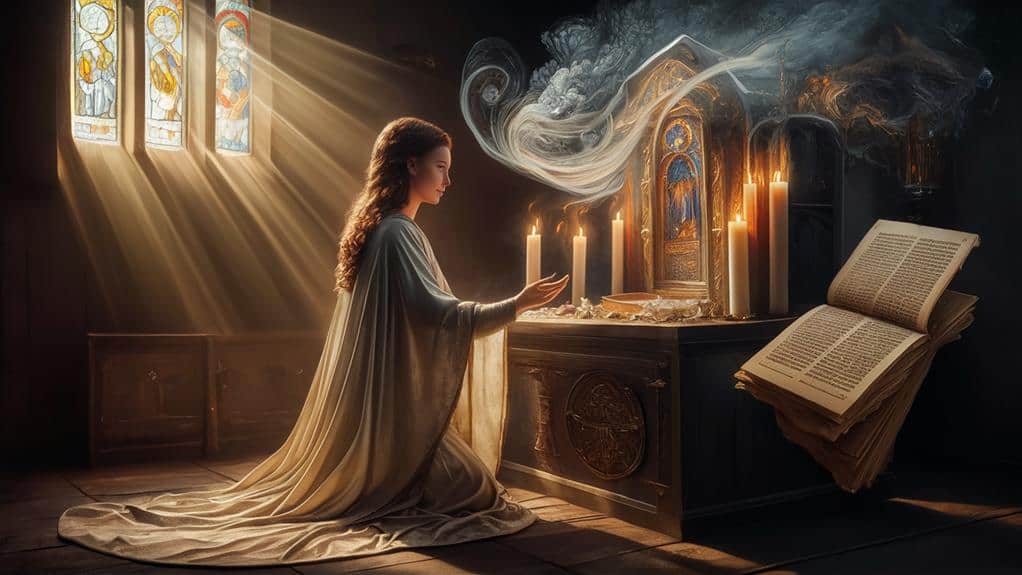
Medieval Christian mysticism saw an unprecedented rise of female mystics who challenged and transformed religious expression between the 12th and 15th centuries.
You’ll find that women like Hildegard of Bingen, Julian of Norwich, and Catherine of Siena crafted profound theological visions that transcended the patriarchal constraints of their time. Through their mystical experiences, they’ve left you a legacy of direct divine encounters that continue to illuminate spiritual paths today.
In their writings, you’ll discover how these women claimed spiritual authority through their intimate relationships with the divine, often describing Jesus in startlingly feminine terms and exploring the maternal aspects of God.
They didn’t just passively receive visions – they actively shaped theological discourse, founded religious communities, and advised popes and kings.
You’ll notice how they developed unique literary styles, writing in vernacular languages rather than Latin, making spiritual wisdom accessible to common people.
Their bold assertions of religious authority, grounded in personal divine revelation, created new possibilities for women’s spiritual leadership that challenged traditional ecclesiastical hierarchies.
Their experiences remind you that genuine spiritual insight knows no gender boundaries.
Gender Roles in Eastern Mysticism
Eastern mystical traditions present a complex tapestry of gender roles that often differ markedly from Western religious frameworks.
You’ll find that many Eastern paths recognize the divine feminine through goddesses like Kali and Tara, while simultaneously acknowledging the transcendence of gender in ultimate spiritual realization.
In Taoism, you’ll encounter the interplay of yin and yang energies that aren’t strictly gendered, though they’re often associated with feminine and masculine qualities.
When you explore Hindu Tantra, you’ll discover practices that honor both the divine masculine and feminine, viewing their union as essential for spiritual awakening.
Buddhism offers you examples of enlightened female practitioners and teachers, though historically, women’s roles have varied across different regions and lineages.
You’ll notice that while some traditions have maintained patriarchal structures, others have embraced women’s spiritual authority and leadership.
In Japanese Zen, Chinese Chan, and Tibetan Buddhism, you’ll find accounts of female masters who’ve demonstrated that enlightenment isn’t bound by gender, even as they’ve had to navigate cultural constraints and expectations along their mystical paths.
Sacred Feminine Through Time
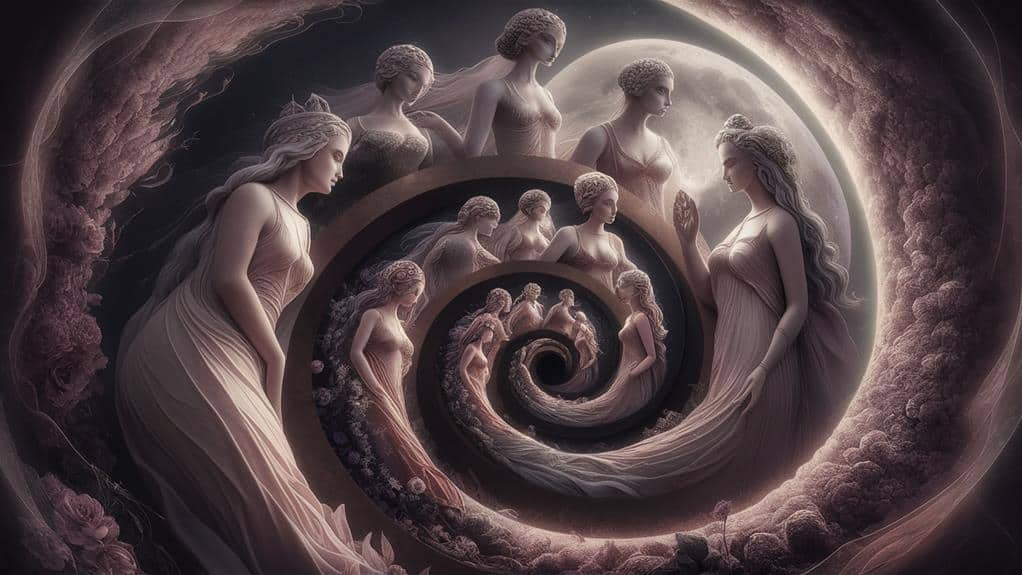
Throughout history, the sacred feminine has woven itself into the spiritual fabric of diverse cultures, manifesting in goddesses, priestesses, and divine mothers.
You’ll find her presence in ancient civilizations where the Great Mother embodied creation itself, from Isis in Egypt to Shakti in India, each revealing a different facet of feminine spiritual power.
As you explore deeper, you’ll discover how the sacred feminine hasn’t remained static but has evolved through time, adapting to changing cultural contexts while maintaining its essential qualities of nurture, wisdom, and transformation.
In medieval Europe, you’ll encounter her in the rise of Marian devotion, while in indigenous traditions, you’ll find her embodied in Earth Mother figures who continue to inspire environmental consciousness today.
In your own spiritual journey, you might notice how these archetypal energies still resonate, whether through the fierce protection of Kali, the healing wisdom of Brighid, or the cosmic creativity of Sophia.
The sacred feminine offers you a pathway to understanding the deeper mysteries of existence, reminding you that spiritual power isn’t confined to patriarchal structures but flows through all aspects of being.
Modern Feminist Spirituality Movements
The resurgence of sacred feminine traditions has sparked powerful feminist spirituality movements since the 1970s. You’ll find these movements deeply rooted in a desire to reclaim women’s spiritual authority and challenge patriarchal religious structures that have dominated Western spirituality for millennia.
Through goddess worship, earth-based rituals, and women’s circles, you’re witnessing a profound reimagining of spiritual practice that honors feminine wisdom and power.
Within these contemporary movements, you’ll discover diverse expressions of feminist spirituality, from Dianic Wicca to eco-feminist theology. You’re part of a generation that’s embracing inclusive forms of worship, where your lived experience as a woman becomes a valid source of spiritual insight.
These movements invite you to explore sacred texts through a feminist lens, question traditional religious hierarchies, and create new rituals that celebrate the feminine divine.
You’ll find that modern feminist spirituality isn’t just about individual practice—it’s fundamentally transformative, encouraging you to heal ancestral wounds, challenge systemic oppression, and forge authentic connections with other seekers.
It’s about reclaiming your spiritual birthright and finding your voice in the ongoing dialogue between gender, power, and the sacred.
Breaking Traditional Religious Boundaries
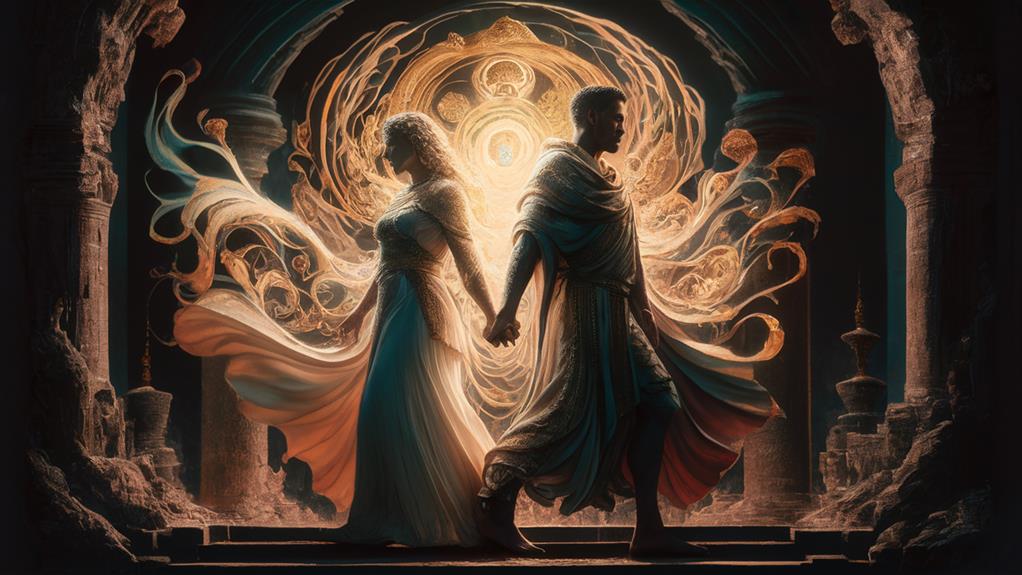
Moving beyond rigid religious frameworks, mystics of all genders have historically challenged and transcended traditional spiritual boundaries. You’ll find that these boundary-breakers haven’t merely bent rules – they’ve reimagined the very foundations of spiritual practice, creating paths that honor authentic expression over prescribed roles.
When you examine figures like Julian of Norwich or Hildegard of Bingen, you’re witnessing examples of mystics who’ve carved sacred spaces within patriarchal structures, offering alternative visions of divine connection.
Today’s spiritual seekers continue this legacy, as they’re increasingly drawn to practices that transcend gender-based limitations and hierarchical constraints.
You’ll notice how contemporary mystical practitioners are weaving together elements from various traditions, creating personalized approaches that honor both ancient wisdom and modern understanding.
They’re establishing communities where spiritual authority isn’t determined by gender but by depth of practice and authentic insight. This evolution reflects a broader shift in consciousness, where you’re invited to explore your spiritual nature without the constraints of traditional gender roles, allowing for a more nuanced and inclusive approach to mystical experience.



